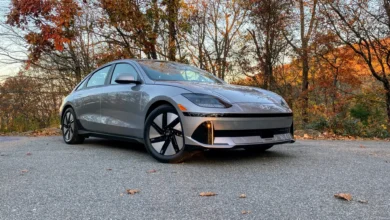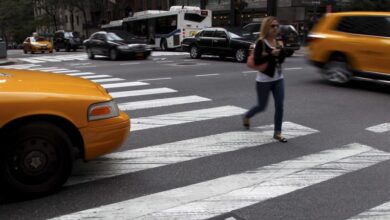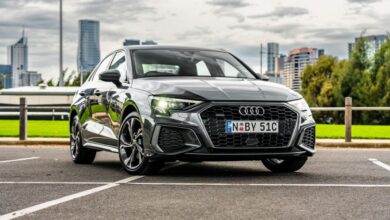Honda’s CB1100R | Redefining the ’80s Superbike
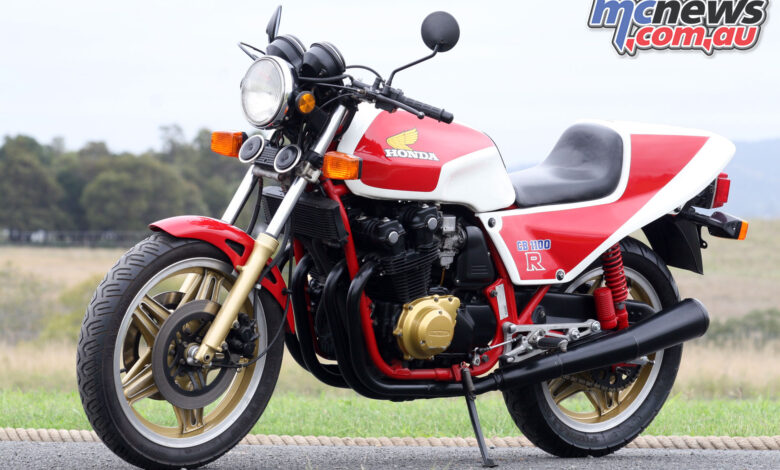
Honda CB1100R
With Ian Falloon
Honda has never liked losing, but during the 1970s they were forced to lick their wounds in production racing. Although the CB750 four was the landmark motorcycle of the era, Kawasaki eclipsed it with their Z1 in 1973. And when Honda retaliated it was either too much, or too late.
The six-cylinder CBX was an impressive technological effort, but never succeeded on the track, while the new generation double overhead camshaft CB900F just lacked the cubes to tackle the Kawasaki Z1000 and Suzuki GS1000.

Racing in the 1970s was something Honda wanted to forget, and they welcomed the new decade with the CB1100R; a no holes barred limited edition production racer. If this couldn’t get them on the top of the rostrum again nothing would. Although based on the CB900F, just about every component on the CB1100R was new.
The black-painted engine was a bored version of the 900, with a nearly square bore and stroke of 70 x 69 mm, to displace 1062 cc. Honda was still using a silent Hy-Vo primary drive chain in those days and width was increased to 32 mm. The camshafts were hotter, the ports reshaped and a smaller alternator sat on the end of the crank, with different brushes so the gold outer covers could be chamfered for more ground clearance.
Honda was proud that the CB1100R could attain a lean angle of 50 degrees, certainly more than enough to tax the stock Japanese Dunlop tyres to their limit. With four 33 mm Keihin CV carburettors, the claimed power was 115 horsepower at 9000 rpm; well beyond that of it contemporaries.
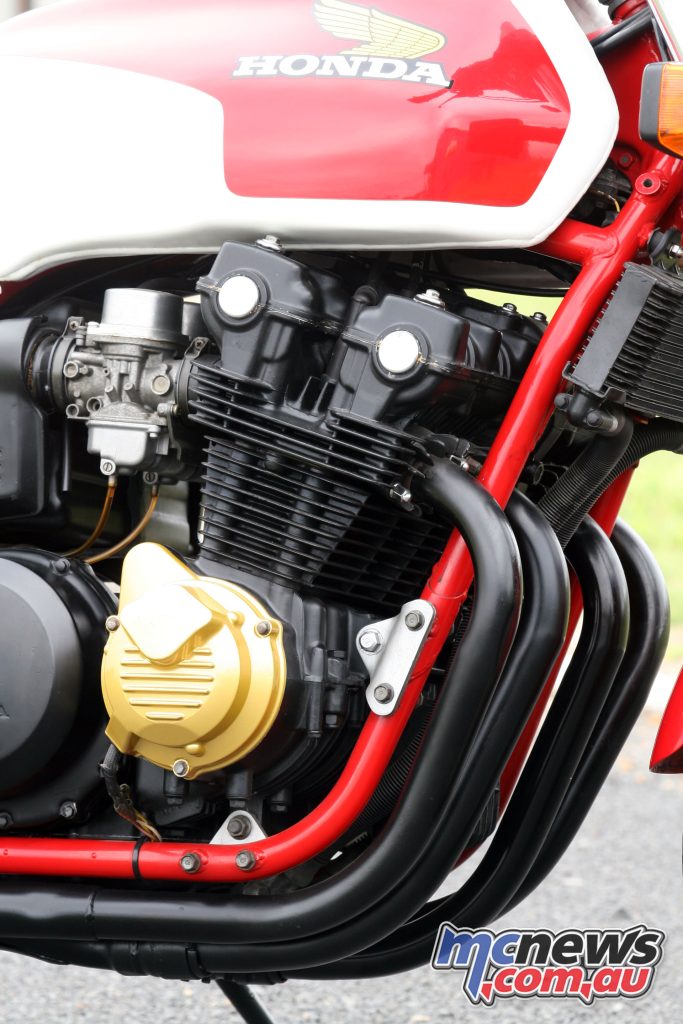
Whereas modern Superbikes are caught up in a spiral of obsessive weight reduction, it was just the opposite in the early 1980s. The excessive CB1100R blatantly eschews the idea of minimalism and for a racing machine was massive. Like all Japanese manufacturers at the time, Honda didn’t consider light weight a priority and the CB1100R was no exception.
In an era when engines generally outpowered the chassis Honda made an effort to address this. The red-painted duplex steel cradle frame was a stronger version of the CB900FZ, without the removable lower section, and included a larger diameter steering head.
The wheels were 19 and 18-inch reversed Comstar, Honda’s idea of incorporating the finest attributes of cast and wire spoked wheels in a unique design. The 37 mm front fork incorporated a balance pipe between the two legs for the de rigueur feature of the 1980s, air-assisted fork spring pre-load.
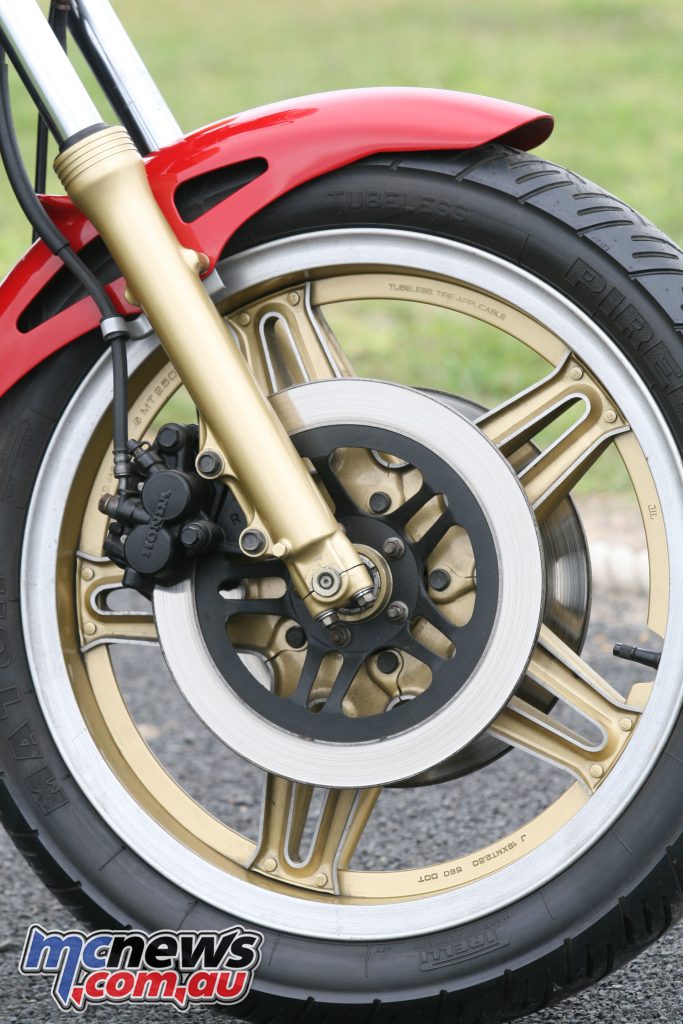
The CB1100RB was also the first production Honda with twin piston brake calipers, and nitrogen-charged piggyback shock absorbers. Dry weight was a considerable 235 kg, and the wheelbase a stretched out 1490 mm. In Europe the CB1100RB came with a frame-mounted half fairing, but fairings were outlawed under Australian production racing regulations and Australian versions were naked.
As the CB1100RB was an unabashed production racer only a solo seat was fitted, with multi-adjustable handlebars above the top triple clamp, and rear-set footpegs. And with fuel stops an important consideration in the long distance production races the hand-beaten aluminium fuel tank held a massive 26 litres.
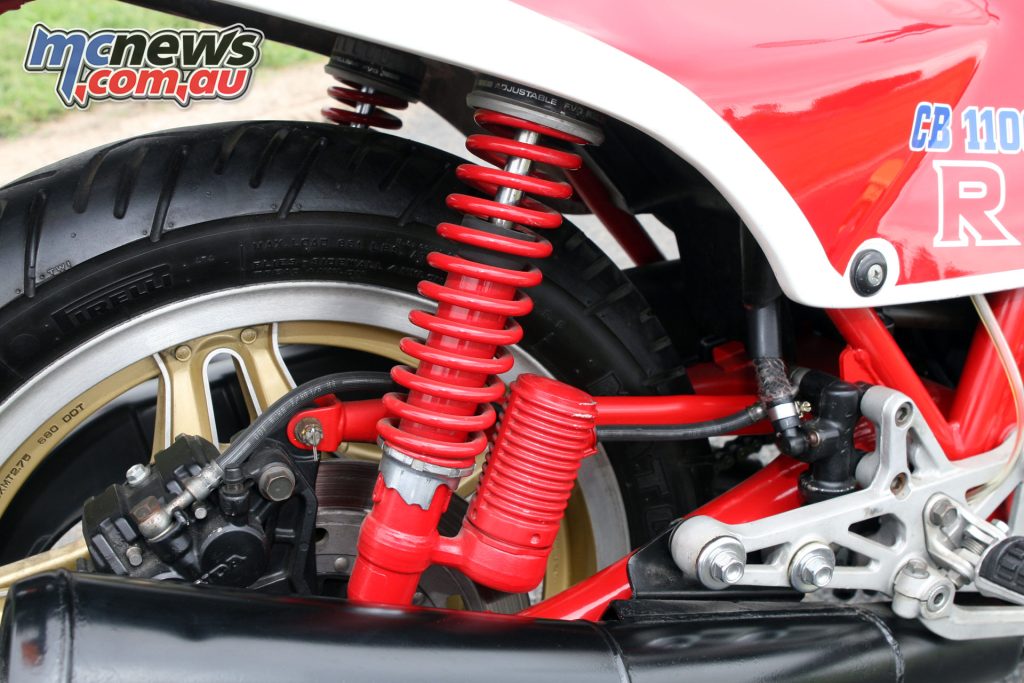
This didn’t do much for the handling of the already top-heavy CB1100R and while the long wheelbase and slow steering contributed to exceptional high speed stability, the CB1100R was an effort to ride in tighter corners. It may have been large, but the CB1100RB was still the fastest motorcycle available in 1980, capable of more than 240 km/h, and rock steady at those speeds.
In the hands of an expert this motorcycle raised the bar and made the much vaunted Italian race replicas look ineffectual. Honda produced just enough CB1100RBs for it to qualify as a production model for the Castrol Six-Hour race. In the 1980 event Dennis Neill put the CB1100RB on pole, and although much of the race was run in the wet, Wayne Gardner and Andrew Johnson rode the CB1100RB to an easy victory.
Gardner repeated this victory on a CB1100RC in 1982 Castrol Six-Hour race, this year teamed with Wayne Clarke. In the UK the CB1100R was equally successful, winning every race in the 1981 MCN Streetbike series and Ron Haslam easily taking the title. CB1100Rs also filled the top three places in the 1982 UK Streetbike championship, this year Haslam shared the spoils with Gardner.
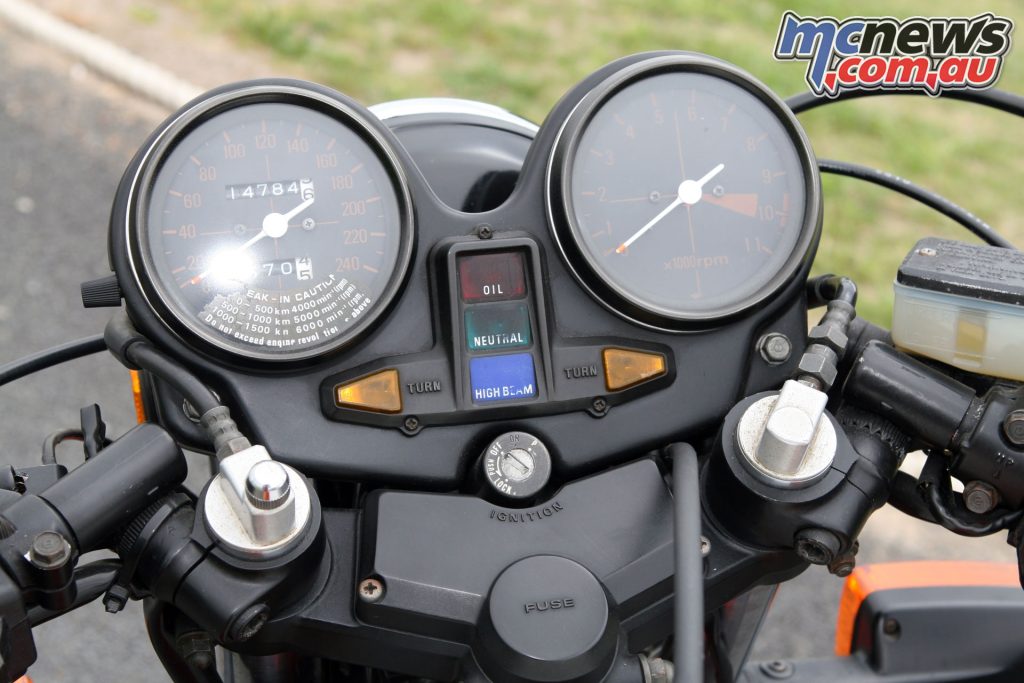
An updated CB1100RC was available for 1982, with an 18-inch front wheel, 39mm fork, and a full fairing with a rectangular headlight. The final CB1100R was the 1983 D, almost identical to the C but for slightly different colours and a rectangular-section steel swingarm.
Over its three production years only 4050 CB1100Rs were built. By 1983 the CB1100RD was a dinosaur, and about to be eclipsed by a new generation of faster, cheaper, and better handling Superbikes. Honda was also now committed to the liquid-cooled V-four.
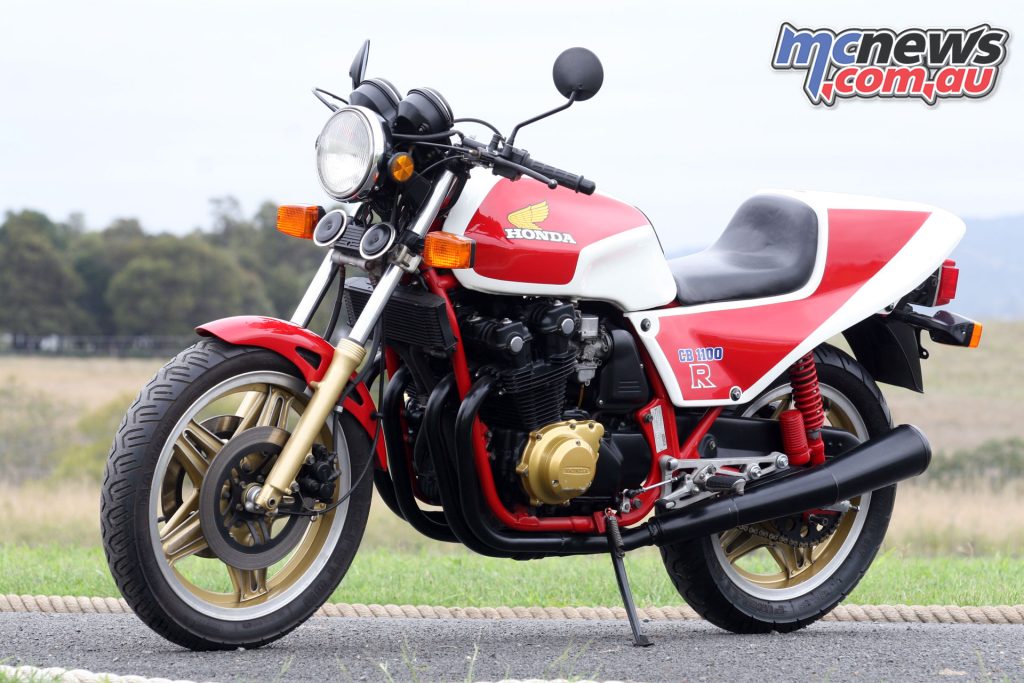
Today the CB1100R remains landmark Honda. After the CB1100R there were no more air-cooled Honda racers. Racing motorcycles would no longer run with 19-inch front wheels and skinny tyres, and they became smaller and more complicated. These wonderful CB1100Rs represented the end of an era.
1980 Honda CB1100R Specifications
| Honda CB1100R Specifications | |
| Engine | 1062 cc, air-cooled, tranverse four-cylinder, four-stroke, DOHC, 16 valves |
| Bore x stroke | 70 mm × 69 mm |
| Compression ratio | 10.0:1 |
| Induction | Four 33 mm Keihin carburettors |
| Power | 120 hp (87.5 kW) @ 9000 rpm |
| Torque | 98 Nm (72.5 ft-lbs) @ 7500 rpm |
| Ignition type | Electronic |
| Transmission | Five-speed |
| Frame | Tubular steel twin downtube |
| Suspension | Telescopic hydraulic forks 37 mm, adjustable preload, Telehydraulic shocks, adjustable |
| Brakes | Double 296 mm rotors, two-piston calipers, single 296 mm rear rotor, two-piston caliper |
| Tyres | 100/90V19, 130/80V18 |
| Wheelbase | 1,490 mm |
| Width | 805 mm |
| Seat Height | 795 mm |
| Fuel Capacity | 26 L |
| Weight | 235 kg (dry) |
| Top Speed | 230 km/h |
